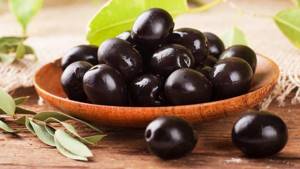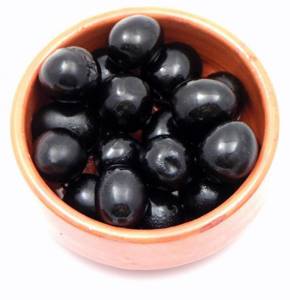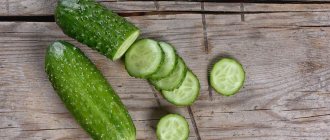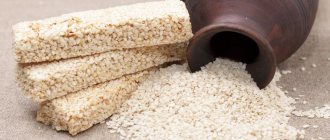The olive tree is characterized by amazing vitality. It can grow even from the smallest root left in the ground. The plant can stand for centuries, even if it is split by lightning. In Mediterranean countries it is believed that those who consume the fruits of the plant receive the same vitality. It is worth taking a closer look at how olives are good for our health.
The fruits of the olive tree, like olive oil, are very highly valued. Processing methods that eliminate their bitterness have been discovered relatively recently.
Properties of olives
Nutritional value and composition | Vitamins | Minerals
How much do olives cost (average price for 1 jar)?
Moscow and Moscow region.
70 rub.
The Mediterranean coast is generally considered to be the birthplace of the olive tree. This plant is widespread there. However, its origin is explained in different ways. Some sources believe that people cultivated wild varieties of olives and began to use them for their own purposes. Others argue that wild varieties appeared after selection and, in this form, spread along the Mediterranean coast.
The ancient Greeks believed in the mythical origin of olives, according to which this wonderful fruit was given to people by the goddess of wisdom Athena. Whichever option is correct, olives are now a very common and popular product, including in our country.
We have two types of olive fruits in use - olives and black olives. In fact, these are the same thing, the only difference is the degree of ripeness of the fruit. Olives are not fully ripened fruits, and black olives are ripe. All over the world, olives are simply called olives, specifying only their color: black and green. Following the tradition that has developed in our culture, let's talk about these fruits as different products. And now we will talk about ripe olives, called olives.
Contraindications and potential dangers
Olives can be dangerous. It is not recommended to use them for those who suffer from cholecystitis. This can be explained by their choleretic properties.
When preserving a product, not the most beneficial chemicals may be used. The most dangerous is iron gluconate . It can cause a number of problems, from an allergic reaction to a stomach ulcer.
You need to choose high-quality olives without dangerous processing - they will only bring benefits to the body.
Benefits of olives
Olives have a very correct balance of essential nutrients, which indicates the benefits of olives for human health. They contain large amounts of calcium and manganese, which have an extremely positive effect on the musculoskeletal system, maintaining its strength. Olives are used to treat joint pain; it is useful to consume olives to prevent diseases of the joints and connective tissues.
The beneficial properties of olives have been proven to prevent the formation of gallstones. Daily consumption of olives helps prevent strokes, heart attacks and angina. Olives are also extremely beneficial for the gastrointestinal tract. They promote better digestion and removal of unnecessary substances from the body. Linoleic acid, which is part of olives, has a healing effect and helps to quickly get rid of wounds and cuts.
Essential oils contained in the skin of olives allow olives to be used in cosmetology. The benefit of olives is their ability to have a rejuvenating effect on the skin. Eating olives eliminates the feeling of hunger and is widely used in dietary nutrition. The calorie content of olives is 115 kcal. per 100 grams, which is much less than olives. Olives are actively recommended for those who want to lose weight. Olives are usually pickled; they are widely used as additions to a wide variety of dishes; they are added to soups, salads, and pizzas.
Chemical composition, calorie content and nutritional value
Olives are a valuable nutritious product . They include about a hundred active components, vitamins A, C, E. The pulp contains fats, proteins, sugars, pectins, ash components, and plant lipids. The peel is also useful.
100 g of product contains 2.2 g of protein, 5.1 carbohydrates and 10.5 fat.
Calorie content of 100 g of olives – 166 kcal. One piece weighing about 3 g contains approximately 5 kcal.
What can be prepared from this product?

Having figured out what effect olives have on our body, we should move on to the last section of the article. In most cases, olives are used to prepare delicious homemade pizza, light vegetable salads, and also when baking fish or meat. We will look at several simple and quick recipes with a special ingredient.
Application
Neither black nor green olives are eaten raw. Raw olives are used to produce olive oil. For culinary purposes, olives are pickled or preserved. The taste of olives also depends on the method of preservation - hot, sour or salty.
In the Mediterranean region, olives are an everyday cold snack. They are served with vegetables, meat, fish, cheeses and alcoholic beverages. So, an olive is always added to a martini glass. Canned olives are also added to hot dishes - pizza, soups, such as solyanka.
Market Analytics
- Black Lives Matter movement: reaction and consequences for the beauty industry
- COVID-19 is changing the rules of the game in the cosmetics market
- Beauty of the future: cosmetic innovations 2021
Convenient search for beauty salons on our website
Beauty salons in Moscow Beauty salons in St. Petersburg Beauty salons in Ekaterinburg Beauty salons in Novosibirsk
Latest blog posts on our website
- Naturecream / Tremella Extract - Snow Mushroom Detox for Skin
- Prostye-sovety / How to visually enlarge your lips with makeup
- Naturecream / Apricot kernel oil for face
- Naturecream / MATRIXYL3000 - the best skin elasticity stimulator
- Naturecream / SPF in Natural Oils
- Naturecream / Geranium (Pelargonium) oil for skin health and beauty
- Prostye-sovety / Save on a beauty salon: procedures that can be done at home
- Naturecream / Growth Factor - brings back youth?
- Oksana-Lezina / 3 effective abdominal exercises from a fitness instructor for beginners
- Prostye-sovety / Making perfect curls at home
Latest forum topics on our website
- Natalya / How to properly make a gelatin mask?
- Mrs._Smith / Badly sunburned! What to do?((
- Ice / Is it necessary to combine fitness classes with a diet?
- Antonova / What can be used for hair loss?
- Radio operatorKat / Who was on a protein diet?
Other articles in this section
| Patisson Patisson is a type of zucchini. Its round, flattened shape with curly edges resembles a plate. The color varies from white to light green and the taste is similar to zucchini. Patisson is a very ancient crop; it began to be grown in Mexico more than 5 thousand years ago. This vegetable was very popular among the indigenous population of South America and was included in the daily diet. The name comes from the French word patisson, which means a cake baked in a pan with scalloped edges. |
| Oakleaf lettuce The Oakleaf lettuce variety (oak lettuce) was developed in France in the 17th century. Its leaves are very similar in shape to oak leaves, which is why the salad got its name. The leaves form a loose rosette. There are two varieties of oakleaf lettuce - green and red. The closest variety to it is butter lettuce. |
| Boiled beans Beans, like peas, belong to the legume family. The bean is native to Latin America, from where Spanish colonialists brought it to Europe in the Middle Ages. As a rule, this is a climbing plant, but bush varieties are also found. Bean fruits are hard, round seeds hidden in oblong pods. There are many types of beans, which differ in color, shape, and pod length. |
| Red cabbage Among all the cruciferous vegetables, red cabbage is distinguished by its bright color. The color varies from a rich red-burgundy hue to purple, depending on the acidity of the soil in which the cabbage grew. It differs from white cabbage in its long shelf life; it does not need to be salted or pickled for the winter. Red cabbage is grown in Northern Europe, America and some areas of China. |
| Tomato (tomato) Although the tomato is considered a vegetable, it is actually a fruit. It is believed that the homeland of the tomato is in Mexico, and in the Middle Ages the Spaniards brought it to Europe. Currently, tomato is an essential component of a huge number of Mediterranean dishes. This is an annual plant of the nightshade family with round fruits of a sweetish taste. The most common tomatoes are red, but yellow, orange, black, and pink are also grown. There are several thousand varieties of tomatoes around the world. |
| Arugula A leafy green vegetable of the cruciferous family, arugula is a close relative of cauliflower. It is an annual herbaceous plant with leaves similar to spinach, but arugula is easily identified by its white flowers. Young arugula leaves have a sweeter taste, while mature arugula leaves have a more spicy and tangy taste and aroma. |
| Chinese cabbage The birthplace of Chinese cabbage, as the name suggests, is China. This is a green leafy vegetable that contains a huge amount of useful substances. There are many varieties of Chinese cabbage, and it is very popular in oriental cuisine. The leaves have a sweet and slightly pungent taste. Chinese cabbage is very useful for those who want to lose weight. |
| Iceberg lettuce Large light green iceberg lettuce leaves form a dense, round head. This salad is very popular in its homeland - America. Iceberg isn't rich in nutrients, but its juicy, crisp leaves can be paired with any dish or sauce. Iceberg was originally grown to extract oil from its seeds. |
| Jerusalem artichoke Jerusalem artichoke is a root crop of the sunflower genus of the Asteraceae family, native to the central regions of North America. It is sometimes called the “Jerusalem artichoke” or “earth apple”. Jerusalem artichoke tubers are round in shape and covered with brown, purple or pink skin. The average weight of a tuber is 100-200 g. The fruit pulp is white and sweetish, contains starch. In many countries of Western Europe and the Mediterranean region, Jerusalem artichoke is used in the same way as potatoes. |
| Okra A herbaceous vegetable plant belonging to the mallow family. Okra is also called gumbo, okra, or lady fingers. It has been used for medicinal and culinary purposes for three and a half thousand years. Okra was very popular in Ancient Egypt. The origin of this crop has not been established, but it is assumed to be in the tropics of India or West Africa. In Russia, okra is grown in the southern regions, mainly in the Stavropol and Krasnodar Territories. |
Olive varieties
Breeders have bred two and a half hundred varieties. They are divided according to different criteria. For example, for oilseeds, table and universal ones. A popular classification is by country of origin.
Greece
The country is the ancestral home of the olive. Varieties are named according to the area where they grow:
- Kalamata. Dark purple fruits with tart, aromatic pulp.
- Koroneiki. The number one oilseed variety.
- Chalkidiki. Green-yellow large fruits for stuffing (onions, capers, cheese, garlic and others).
Crete produces the most olives: more than the rest of the Greek territories combined.
Israel
The country specializes in oilseed varieties. Green savory oil, an ingredient in kosher cuisine, is obtained from the Suri fruit.
Spain
The world's number one exporter with half the world's turnover. Several varieties of olives are cultivated in the country:
- Casareña. Small fruits with dark skin and juicy pulp.
- Ojiblanca. Black olives with delicate pulp.
- Picual. Universal variety.
The last two varieties are recognized as the best for canning.
Italy
There are two types of local olives that are valued:
- Vittoria. Fragrant green giants with juicy flesh.
- Miccio le Olive. Recognized by fruity notes on the palate.
Vittoria is not “improved” in any way during preparation. For Miccio le Olive, brine is used, the composition of which is a trade secret.
France
Almost all varieties of local olives are considered universal. Most Popular:
- Nyon. Smallish red-brown fruits with a bitter taste.
- Nice. Small, very dark with delicate oily flesh.
- Picolini. Green salty fruits.
Once upon a time, all vegetable oil imported from Europe in Russia was called Provençal (after the name of the French province of Provence). Today this is the name given to any high-quality olive oil.
How to choose

Olives are healthier than green olives; oil is made from them, and they contain the maximum amount of healing substances. Fresh drupes that have not been subjected to heat treatment are healthier. High-quality fruits are elastic, without whitish spots.
Natural olives can be bought in markets during the short ripening season from October to December; in the remaining months, canned fruits are available. It is important to choose the right olives when on a diet so that they bring benefits and not harm:
- The fewer degrees of processing a product has undergone, the healthier it is.
- Spanish black olives are usually less salty than Greek ones, and salt retains water in the body, making it difficult to lose weight.
- Glass containers are better than tin cans. When damaged, the metal reacts chemically with the olives, making them a dangerous product.
- Ripe, high-quality olives with pits, since their pulp is too soft for the extraction procedure.
- When making stuffed olives, more preservatives are used; it is better to avoid them.
Under no circumstances should you eat olives that have been artificially turned black.
They are produced from green fruits, quickly removing bitterness by soaking in a solution of caustic soda (additive E 524). The thick dark shade is given by the food additive E 579 (iron gluconate). Black oxidized olives will do more harm than good.
Harm of this product

Like any other product, olives can harm our body. You can include such fruits in your diet only in limited quantities. Canned olives also bring benefits in quantities of 2-3 pieces.
Those people who suffer from cholecystitis due to the choleretic effect provoked by the described fruits should limit their consumption of olives. Consumers with kidney disease or hypertension should also use caution when adding olives to their diet.
When choosing olives, you should not buy rich black fruits that have a uniform shade. In most cases, such a product has been subjected to chemical treatment, which is fraught with various consequences for our body.











